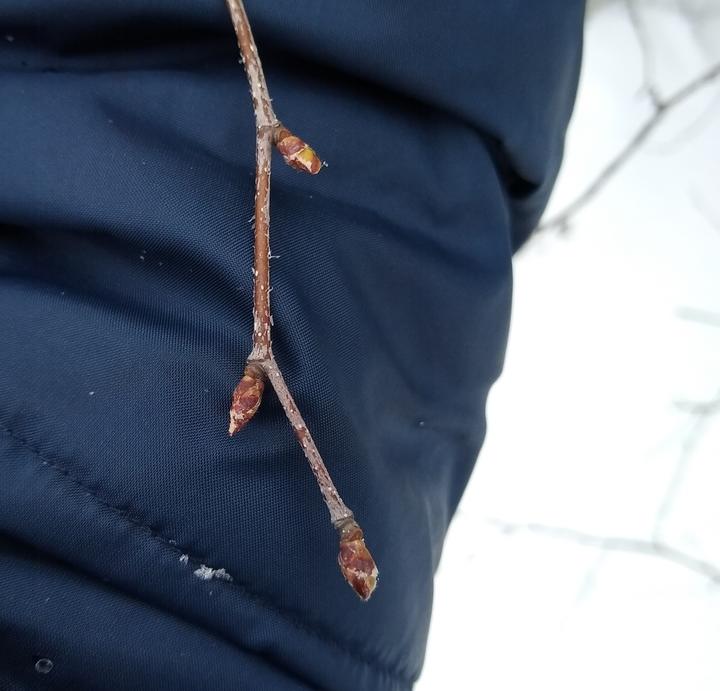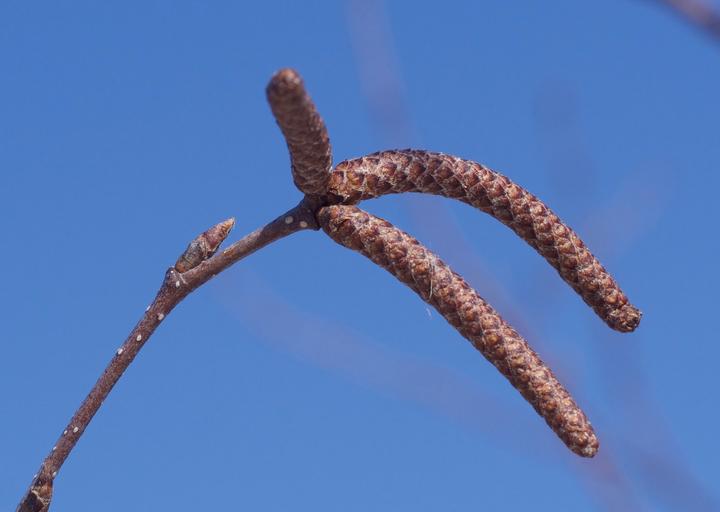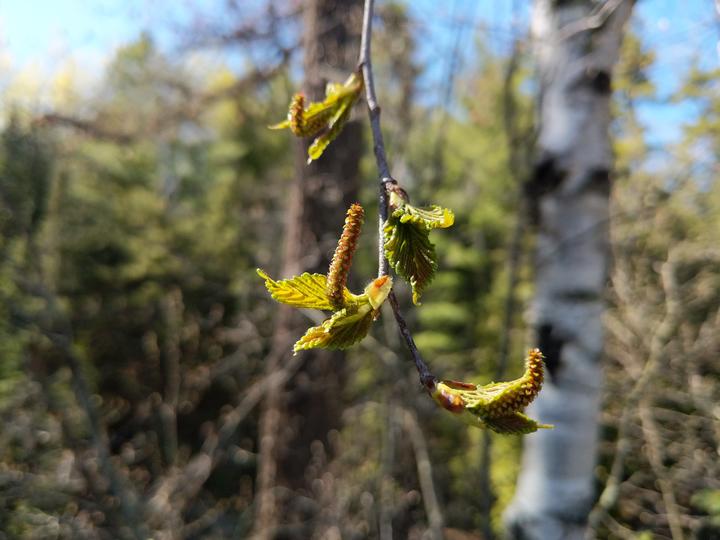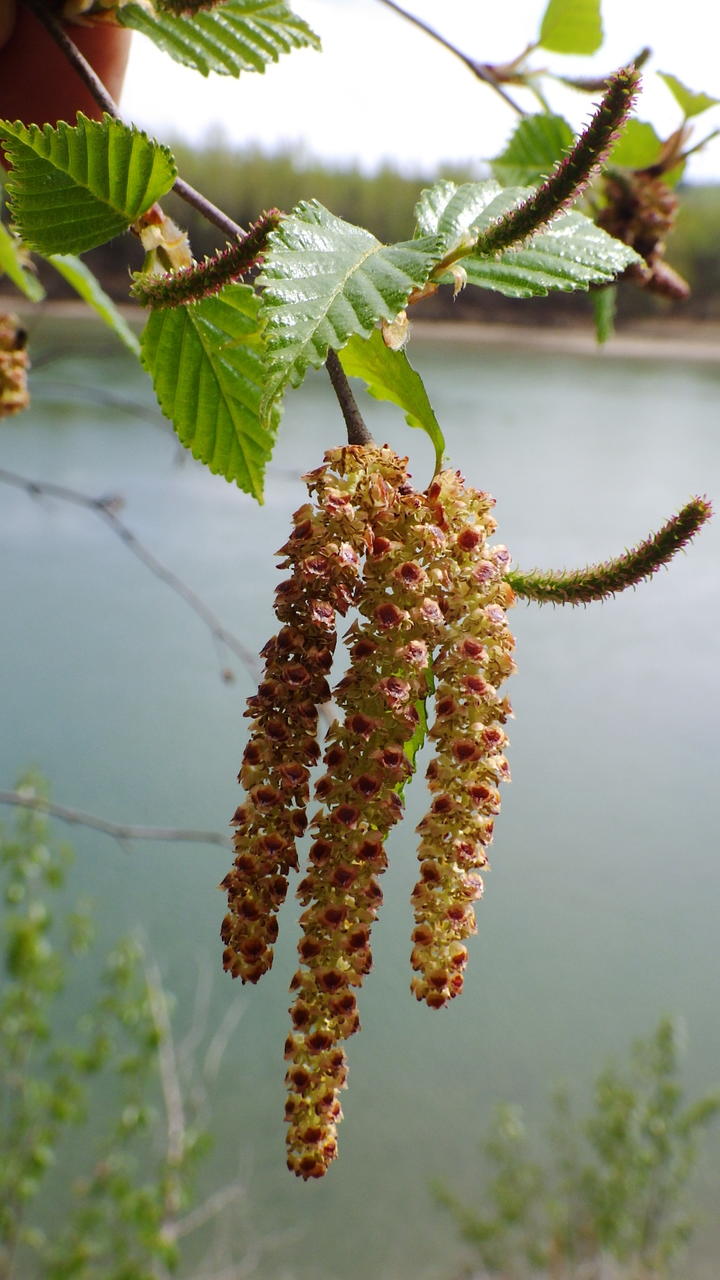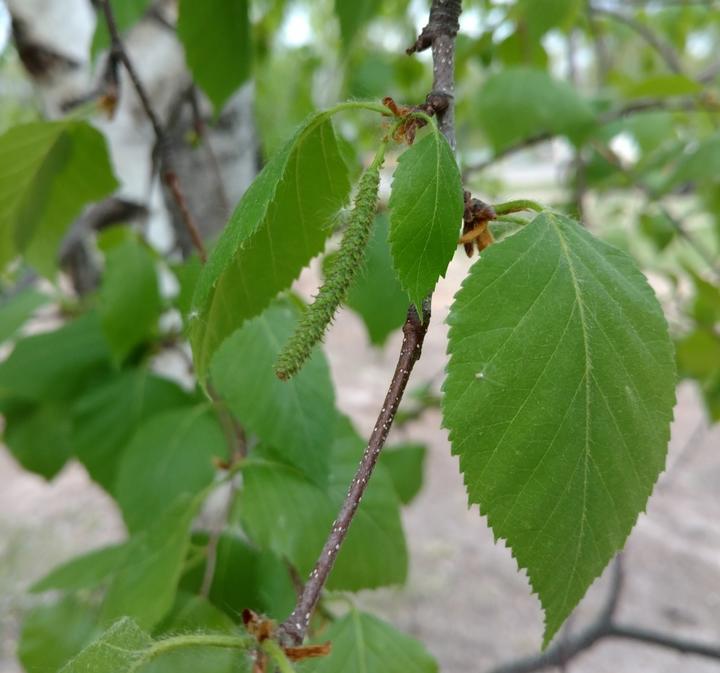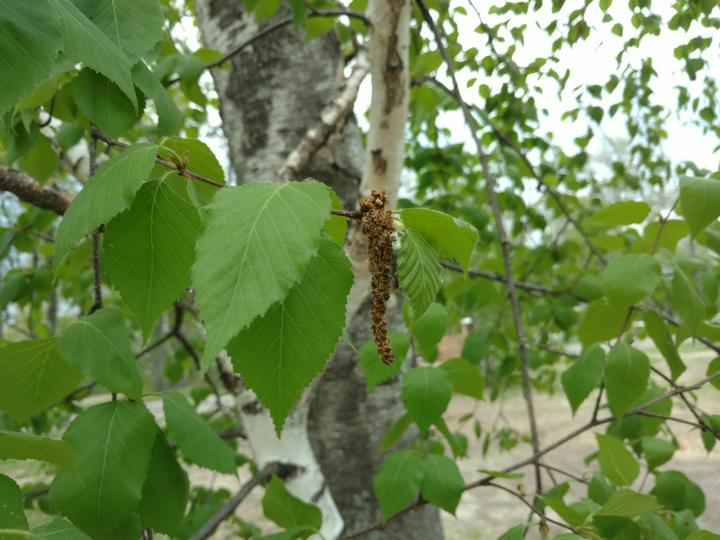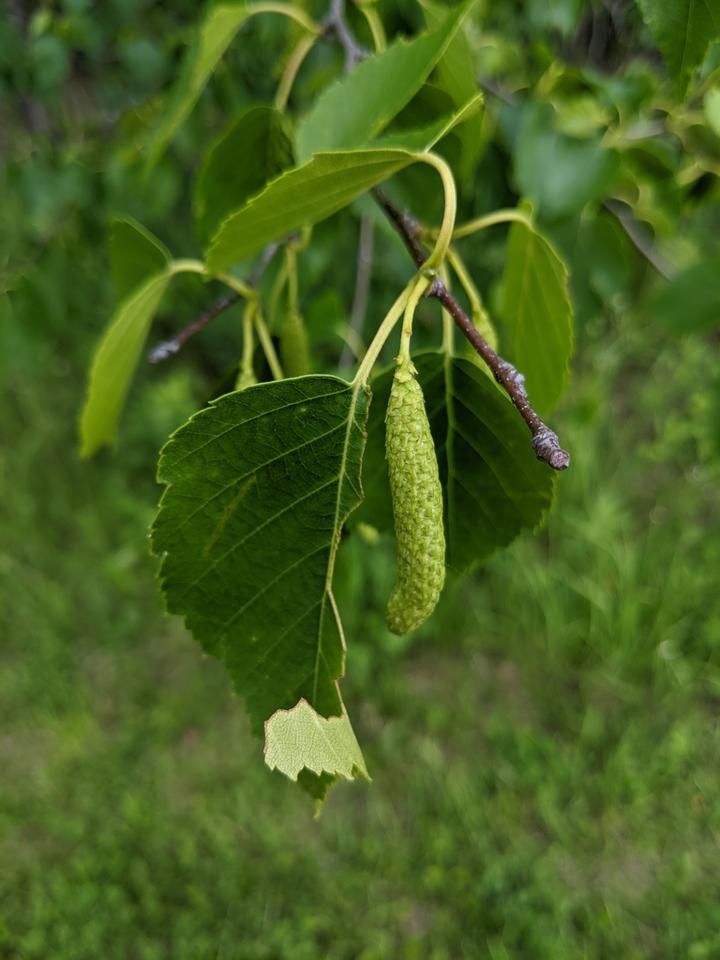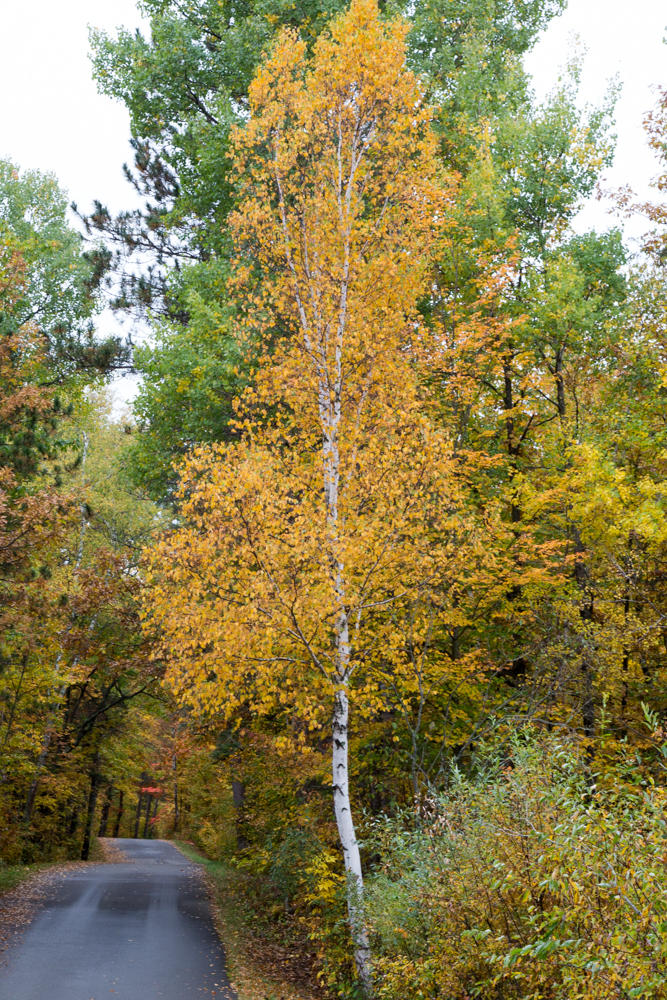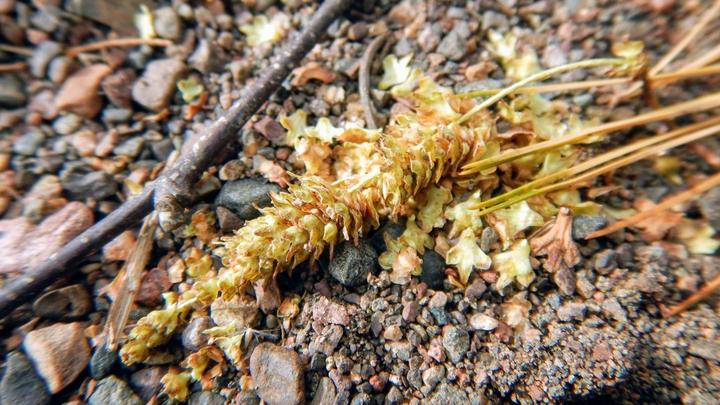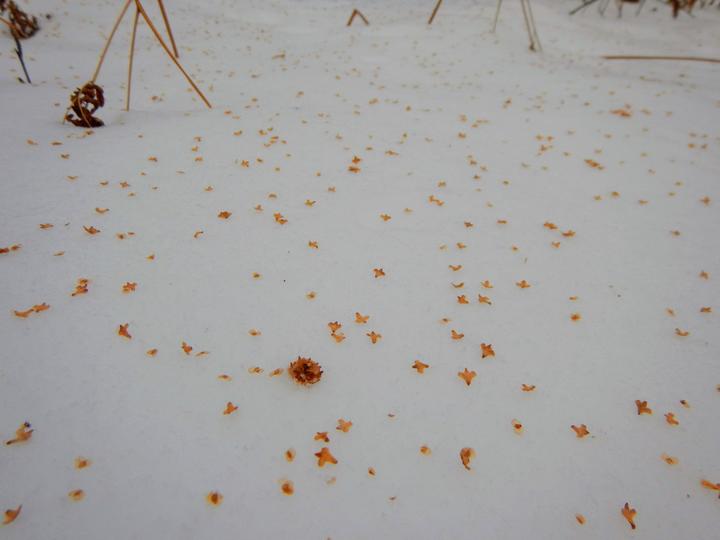More names for this tree
Anishinaabemowin: Wiigwaasi-mitig
Dakota: Çaŋhasaŋ (birch tree)
The Dakota and Anishinaabe were among the earliest people to name Minnesota’s plants and animals, as well as to understand them in relation to Minnesota’s climate and seasons. Those original names are still in use, and several are included on the Season Watch website.
Latin (or scientific name): Betula papyrifera
The scientific community has a convention of assigning agreed-upon Latin names to every kind of organism. Using scientific names helps people communicate confidently about the same organism and organize lifeforms based on how closely related they are.
Page contents
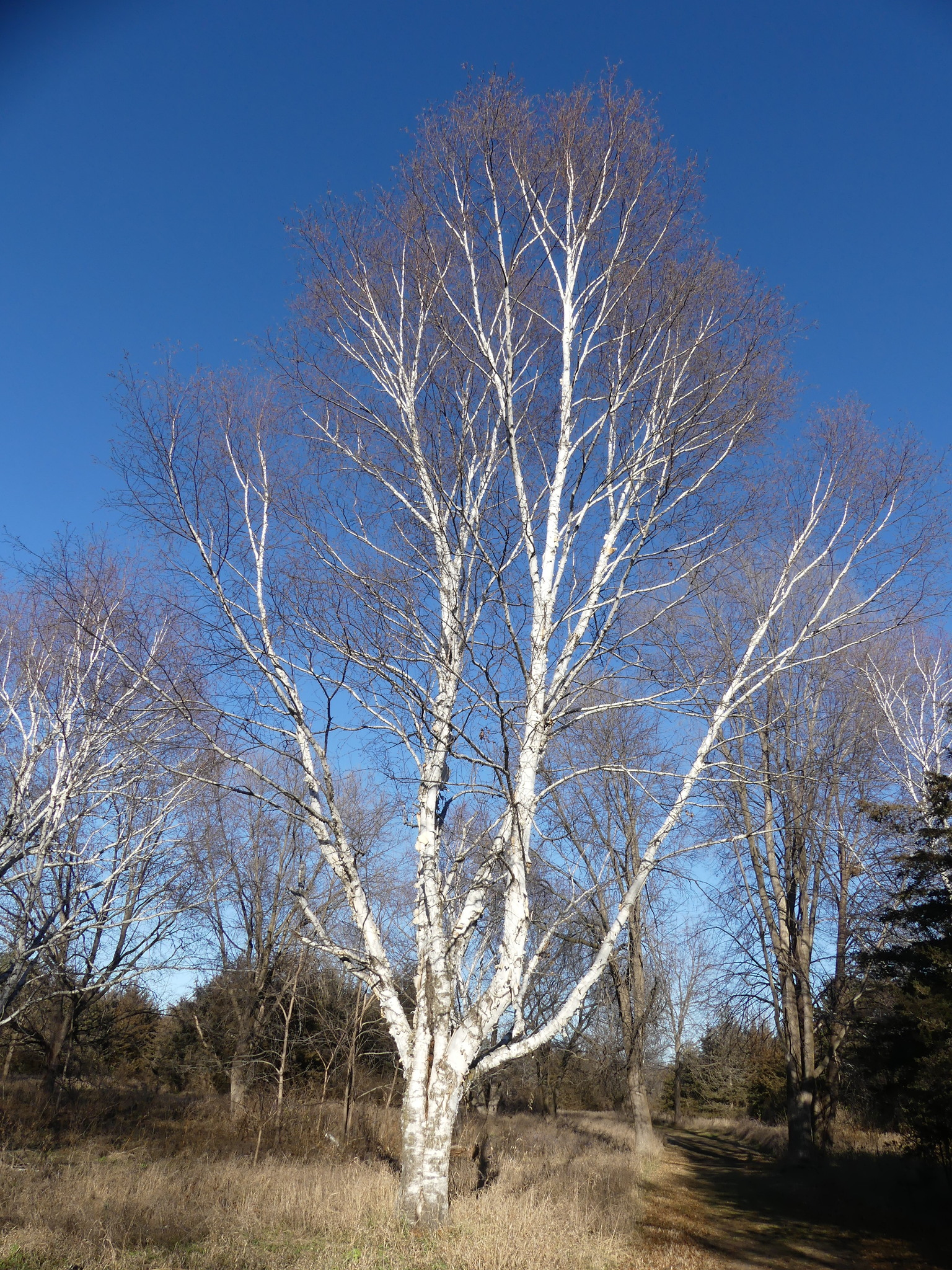
November 25, 2021, Dakota County, Minnesota
Photo © kimcwren, some rights reserved (CC-BY-NC)
iNaturalist observation
About the paper birch
- The paper birch is a deciduous tree with distinct white, papery bark that grows up to seventy feet tall and lives up to 120 years.
- In spring, the paper birch produces sap that can be used to make syrup and vinegar.
- From April to June they have yellow flowers that form tassel-like structures, called catkins.
- The flowers create seeds that ripen from August to September.
- In the fall, the tree’s heart shaped leaves turn a bright yellow.
- In Minnesota, paper birch can be found everywhere except for the southwest corner of the state.
- Fun fact: Young leaves and twigs can be infused in hot water to make a wintergreen flavored tea.
Visual guide to phenology
Watch for the appearance of leaves, flowers, and fruits. Take notice of when flowers open and fruits ripen.
Note to observers
This page explains general clues to watch for when observing paper birch phenology. However, this page does not instruct observers on how to identify this plant or collect data in a standardized way.
- For help with identification, see Minnesota Wildflowers.
- For guidance on collecting data, see Nature’s Notebook.
Graphs and historical data
Note: The Orientation Center provides a map, as well as information on reading graphs; interpreting summary statistics, who collected the data and how; and how to download datasets for independent exploration.
Leaf budbreak
- Earliest: April 15 (occurred in 2005)
- Average: May 2
- Latest: May 29 (occurred in 2002)
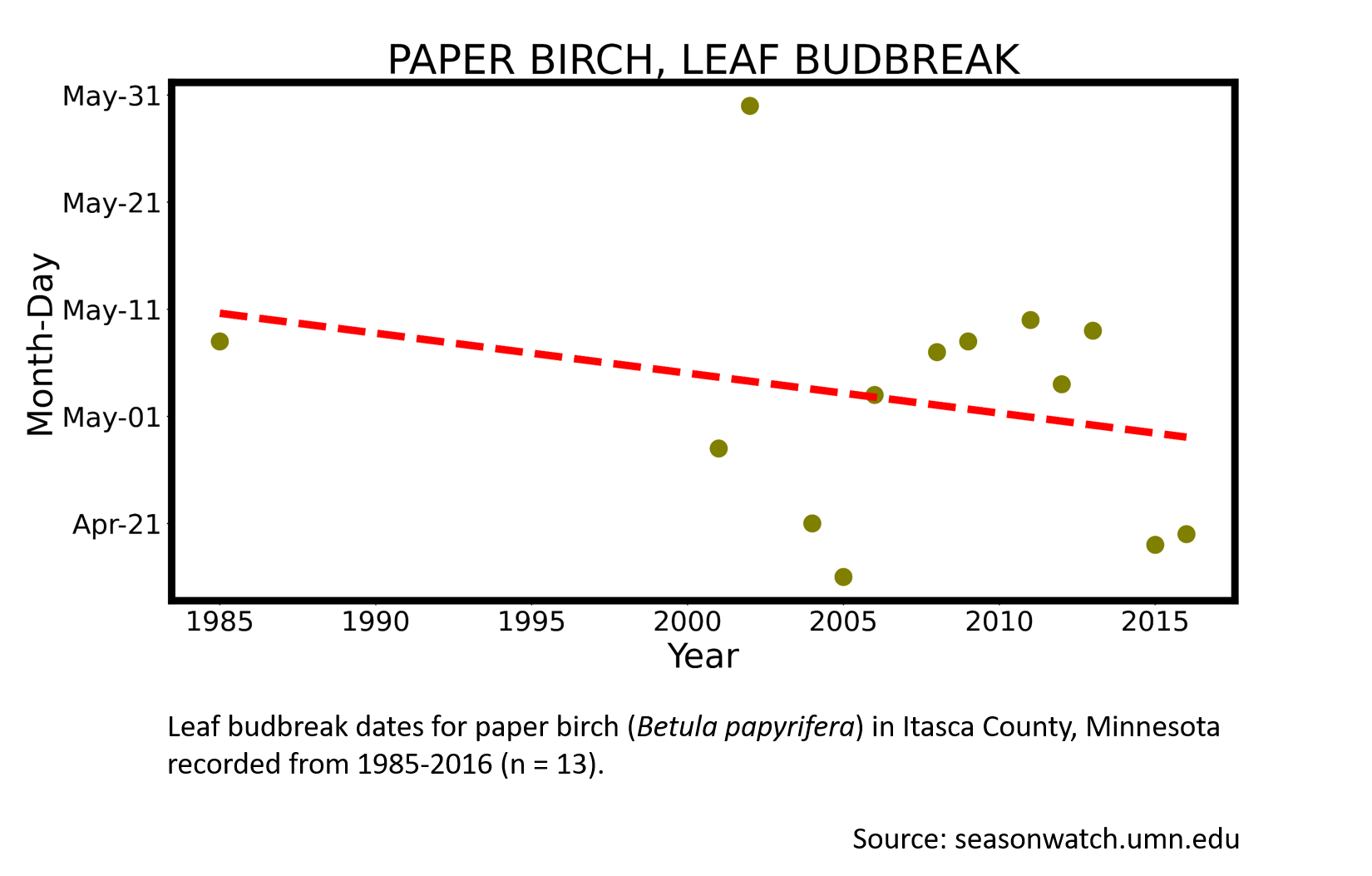
More resources
Paper birch (Betula papyrifera) in the Minnesota Biodiversity Atlas
Paper birch (Betula papyrifera) in Nature's Notebook
Paper birch (Betula papyrifera) profile by Minnesota Department of Natural Resources
Cold winter temperature can accelerate the timing of spring budbreak, synopsis of a journal publication by Claudia Nanninga, Chris R Buyarski, Andrew M Pretorius, Rebecca A Montgomery (2017) in Tree Physiology 37: 1727–1738.
Keep exploring Season Watch
Keep exploring Season Watch
Co-author: Lynsey Nass, Minnesota Master Naturalist
